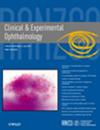Predictive Factors for Uveitis Refractory to Treatment in Initial-Onset Acute Vogt-Koyanagi-Harada Disease
Abstract
Background
To identify predictive factors of uveitis refractory to treatment in initial-onset acute Vogt-Koyanagi-Harada disease.
Methods
This was a retrospective chart review of patients with initial-onset acute Vogt-Koyanagi-Harada disease presenting to the Royal Victorian Eye and Ear Hospital, Melbourne, Australia between July 2001 and March 2023 inclusive. Factors predictive of uveitis refractory to treatment were determined using logistic regression models with, and without, adjustment for initial use of intravenous methylprednisolone.
Results
Thirty-eight patients with initial-onset acute Vogt-Koyanagi-Harada were included, 27 of whom received initial intravenous corticosteroids (71%) and 23 met the criteria for uveitis refractory to treatment (61%). Comparing those who received intravenous corticosteroids to those who did not, the incidence of complications, time-to-quiescence, time-to-relapse, time-to-low dose corticosteroid or corticosteroid-sparing control of inflammation and time-to-remission were not statistically different (all p > 0.164). Factors at onset of treatment that were predictive for uveitis refractory to treatment included greater anterior chamber inflammation (p = 0.008), greater vitreous inflammation (p = 0.015), the absence of bacillary layer detachments on macular optical coherence tomography (p = 0.010) and commencement of systemic steroid therapy 1 week or longer after ocular symptom onset (p = 0.013). Absence of intravenous corticosteroids as initial therapy was not a statistically significant predictive factor for refractory disease (p = 0.802).
Conclusions
Delayed commencement of systemic steroid therapy and higher severity of intraocular inflammation at presentation are predictive of initial-onset acute Vogt-Koyanagi-Harada disease evolving into disease refractory to treatment.

 求助内容:
求助内容: 应助结果提醒方式:
应助结果提醒方式:


